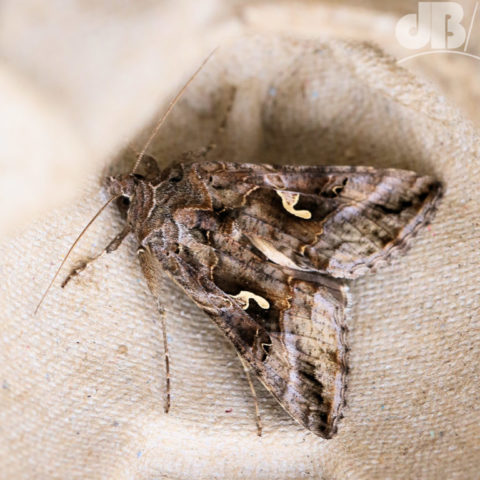Lots of animals species migrate – buffalo, wildebeest, swallows, swifts, monarch butterflies, and of course, moths. I found two Silver Y (Autographa gamma) this morning, before the rain. This species can turn up in the thousands, according to UK Moths, it’s a day and night flyer.
Curiously, having photographed it this morning and headed back to my PC to look for an ID, I logged into the “Moths UK Flying Tonight” group on Facebook and the first moth in the newsfeed was a Silver Y. More specifically, because its “Y” is split in two it was actually Silver y “f.bipartita”. But, mine according to the expert on the group was a classic example of the species.

The Silver Y is in the family Noctuidae, but within the relatively small sub-family Plusiinae. It is a medium-sized moth (wingspan 30 to 45 mm). It has intricately patterned wings with shades of grey and brown for camouflage. In the centre of each forewing there is a silvery mark shaped like a letter “Y” or a Greek letter Gamma, hence the common and scientific names. There are various forms with varying colours that arise dependent on the climate in which the larvae grow.
If you’ve been following Sciencebase this week on the site, Facebook, and on Twitter, you will have noticed a trend in the past few days, the focus is moths. A friend asked if I’d added a new string to my bow…well, not so much that it’s still just science and snaps, but maybe the subject matter is akin to having bought some new sheet music.